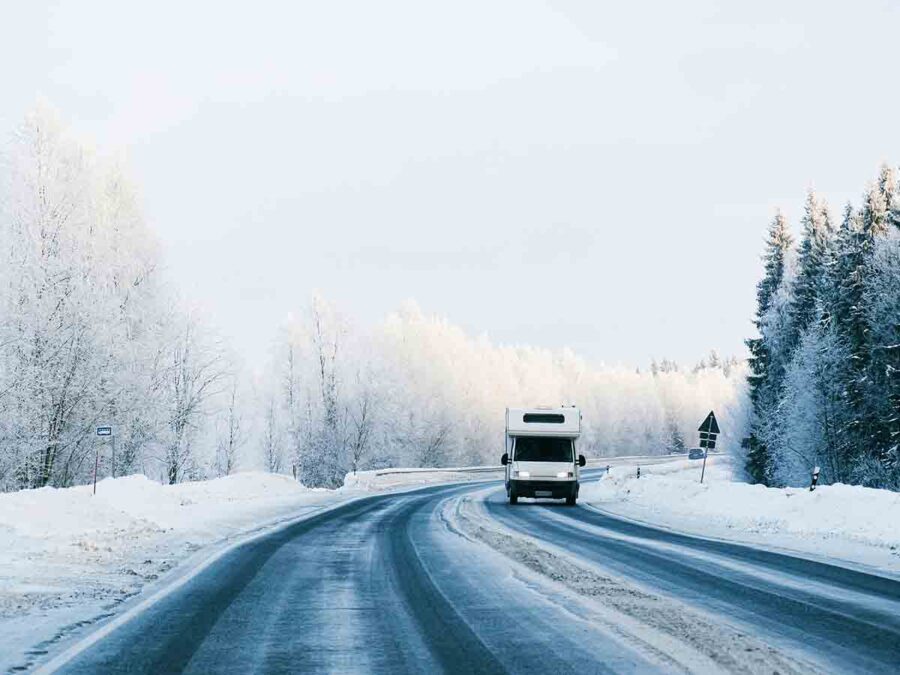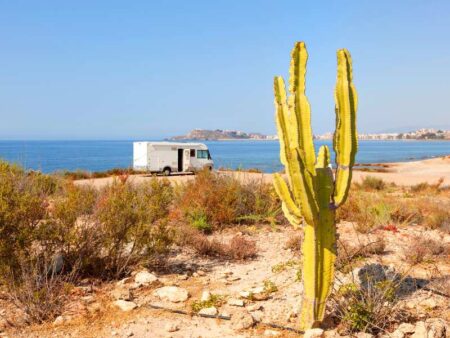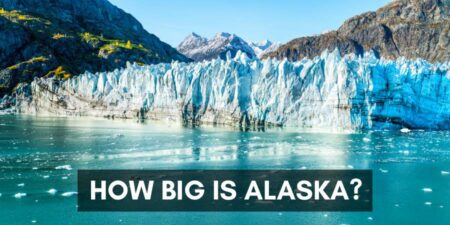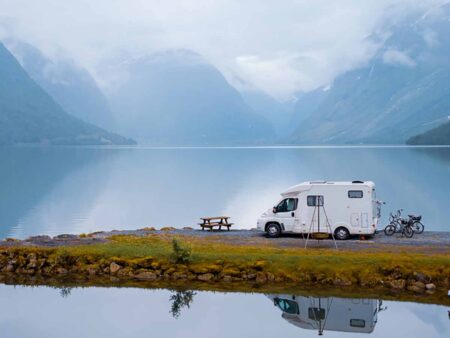Visiting Alaska is a bucket-list destination for most camping enthusiasts. The low population, the abundance of wildlife, and the stunning terrain offer adventurists dozens of camping destinations for relaxation or fun.
To help you streamline planning an Alaskan camping trip, we put together this Alaska Camping Guide that details the best locations to stay, along with the top things to do and see nearby.
We hope you use this traveler’s guide to Alaskan camping to plan future trips to this vast state full of amazing natural wonders and experiences.
4 Alaska Camping Destinations
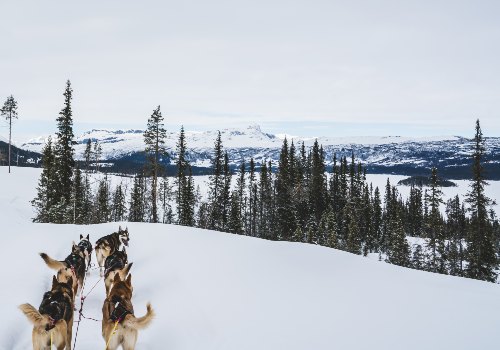
When you want to experience camping in one of the most untouched landscapes in the US, an Alaska camping book is worth checking out. These destinations are good places to see:
1. Lost Lake Campground
The Lost Lake wilderness camp Alaska experience is a top pick for the stunning views of the 90-acre Lost Lake and the 1,500-acre Quartz Lake, and the surrounding forested mountains.
With ample trails, fishing, boating, and other activities available, this campground, set in the state’s interior, will give you a taste of the wild Alaska. In addition, the location puts you close enough to towns to enjoy some shopping, dining, and other attractions to round out your visit.
The campground is part of the 600-acre Quartz Lake Recreational Area and offers a fishing dock, boat launch, hiking trails, and seasonal water activities.
Fishing for rainbow trout and salmon may be the best reason to stay at this campground. However, the five hiking trails that meander through the park and along the two lakes get rave reviews for the moose and beaver sightings and views of the Alaska Range, Tanana River Valley, Moose Pond, and Shaw Creek Flats.
Summer visits will provide an opportunity for volleyball, swimming, and waterskiing. Winter visits allow you to try your hand at dog mushing, snow machining, snowshoeing, ice fishing, and skijoring and let you experience below-freezing temperatures.
What to Know:
Location: Big Delta, AK – Off Hwy 2 southeast of Fairbanks
The small rustic campground has 16 sites for tents, motorhome RVs, and trailers in the loop. The campsites are shady and provide privacy. There are also 87 parking/camping sites in the Quartz Lake parking lot development. All are on a first-come, first-served basis. Arriving early in the day should help you secure a camping spot.
The fee is $15 a night for camping and $10 for the boat launch on Quartz Lake using the self-pay station. If you love ice fishing, the park offers some fishing huts you can reserve.
Each site features a fire ring and a picnic table. Potable water (may freeze up during winter) and vault toilets are available, plus the campground is pet-friendly. No RV or tent electrical hookups, showers, or dump stations exist. The Big Delta State Historical Park is less than six miles away and has a dump station.
Lost Lake Campground (Video)
2. Alaska Bear Camp
Look for this campground in the Alaska camping book.
If you want to observe and photograph brown bears in their native habitat, there’s no better place to go than the Alaska Bear Camp. Once part of Great Alaska Adventures, the camp now operates under Natural Habitat Adventures and goes by the name NatHab’s Alaska Bear Camp.
A bear camp Alaska experience will be unlike any other. You’ll fly from Homer by bush plane and land on the camp’s private 15-acre holding within the pristine Lake Clark National Park. The flight alone is unique as you pass over Cook Inlet, glaciers, and volcanoes on the way to the bush camp.
The campground is sustainable and rustic but provides plenty of comforts, from the deluxe tent cabins with real beds, heat, and hot showers to the gourmet meals prepared by the in-house chef.
The location allows you to safely view bears from two viewing platforms within the camp or follow our naturalist guides to spot the bears and other wildlife along the shore and surrounding meadows.
What to Know:
Camp visitation is only from May through August. The weather is colder in May and June (35°F lows and 59°F highs), but there’s less rain. July and August average 48°F lows and 63°F highs, but rainfall can be as much as four inches a month.
Every booking covers a stay of four nights. The cost for each individual in 2022 is $4895. For 2023, the price per person is $5795. A non-refundable deposit of $500 per person is mandatory upon booking. Guests must arrange their own travel to Homer.
Accommodations are limited to 14 guests, so plan to book a spot well in advance. Of course, the cost will stretch your budget, but if you’re traveling with a group of 7 or more, there’s a discount on both accommodations and internal air flights. Trust us; this is a once-in-a-lifetime camping adventure worth saving for!
Alaska Bear Camp (Video)
3. Porcupine Campground
The Porcupine Campground is one to book if you’re looking for excellent camping in Hope Alaska. The remote campground is in the Chugach National Forest near the historic gold rush town of Hope. It is on the south coast of Turnagain Arm, part of the Cook Inlet.
The park allows guests to relax in privacy with spacious campsites sitting along Porcupine Creek. You can head to the scenic overlook for whale watching or see kitesurfers show off their skills in the bay.
The 5.1-mile Gull Rock Trail allows hiking, horseback riding, and mountain biking for fun ways to take in the scenery along the Turnagain Arm coast. Plus, you can hit the many local waterways to fish, whitewater raft Six Mile Creek, or even partake in panning for gold.
If you’re looking for a supreme challenge, the 39-mile-long Resurrection Pass Trail meanders through the Kenai Mountains from the town of Hope to Cooper Landing. Hiking the entire trail takes about three days, and you can find public-use cabins along the route for overnight stays.
What to Know:
Location: Hope Hwy, Hope, AK – At the end of Hope Highway
The campground is only open from May 20 through September 10, so head to Recreation.gov and make your reservation up to six months in advance. The rate is $18 nightly (self-pay) for RV or tent sites with no hookups, but the town of Hope is nearby and offers shopping, dining, and entertainment options.
Camping sites can fit even the largest RVs, and the views are amazing. There is a fire ring and picnic table at each campsite, firewood for sale, potable water from a hand well, a dumpster, and vault toilets.
This campground is a fantastic base for fishing the Kenai and Russian rivers and Resurrection Creek. Like all of Alaska, the mosquitoes will be heavy during summer, so pack plenty of bug spray. Also, be bear aware and follow safety precautions to deter interaction.
For a fun experience, head to Resurrection Creek and stop at the Resurrection Pass Trail footbridge, where you can find a half-mile of public-access gold panning in the creek. You can also visit Gold Rush Peck next to the Hope Mining Museum, where you can buy a bucket and get a hands-on lesson from an authentic miner in panning for gold.
Porcupine Campground (Video)
4. Heritage RV Park
If you’re looking for an ocean-front full hookup RV park, you’ll want to consider the Heritage RV Park on the Homer Spit. You get free Wi-Fi, hot showers, a laundry facility, a rooftop deck observatory, and an art and coffee bar in the clubhouse.
Enjoy spectacular views from the beachfront sites, where you can step out of your camper door and go fishing or spend hours beachcombing for treasures. Spot eagles, otters, and seals as you relax on your patio or take a walk into Homer for a meal or other entertainment.
Mountains, beaches, ocean, and glaciers surround the park, so your view will be amazing and relaxing no matter where you look.
What to Know:
Location: 3350 Homer Spit Road, Homer, AK
The park only allows self-contained RVs and does not allow any tent or car camping. Rates start at $72 a night, but many sites have size/length limitations, so call to ensure you’re getting the best spot for your RV type.
The park has room for boats and extra vehicles, so feel free to bring a group and enjoy direct ocean access to Kachemak Bay. You can also book one of the five Fishing Hole campsites, which front the salmon-stocked fishing lagoon.
Heritage RV Park (Video)
Tips for Camping Alaska
Time Your Trip to Suit Your Needs
While Alaska is vast, there are times when tourists crowd into certain locations. If you want to miss the mad salmon-run rush, avoid any areas near the Kenai River in an Alaska camping book in July.
Mosquitoes are the most oppressive from mid-June through the first week or so of August, so consider visiting outside these weeks to avoid the aggravation.
If you dream of witnessing the Northern Lights, the best time to visit Alaska is August through April, when the skies are darker and the nights are longer.
Be Self Sufficient
While there are plenty of shopping centers to buy supplies in Alaska, you will encounter a lot of campgrounds with no hookups or other amenities. Many campgrounds are also in remote locations, making travel to a store time-consuming.
You also need to factor in the chance that the weather can turn unexpectedly, and you could get stuck for extra days. Therefore, you’ll need to ensure you pack for your camping trips accordingly so you have all the food, water, and supplies necessary to last your entire trip and then some.
Be Bear Aware
Want to Connect With a Community of Over 1,078 RV Enthusiasts?
Bears are everywhere in Alaska, and maintaining a safe distance from them is a must.
No Alaska, Texas, Montana, etc. camping book can ever get you ready for bears.
Please don’t encourage them to visit your campsite by leaving out food. Instead, use bear-proof containers and store them away from your tent or camper.
Don’t set up your base camp close to river banks or lake shorelines or near trails or animal pathways through the brush.
Try to camp in groups and make noise while hiking or hanging out to alert bears of your presence.
If no authorized waste receptacles are available, always burn all garbage and food scraps over a fire to immediately reduce the transmission of odors that can attract bears or other wildlife.
Prepare for Weather Extremes
Weather in Alaska is unpredictable at best, with rain always possible, so packing the appropriate clothing and protective gear is imperative for safety and comfort.
Summer may bring warm enough daytime temps for a t-shirt and shorts, but have a sweatshirt, rain jacket, winter coat, and long pants ready when the sun sets or the rain or snow starts falling.
Alaska is home to many hot springs, and having a swimsuit in your pack will allow you to get in and enjoy.
A durable rain fly for your tent, insulated blankets, a portable gas heater, and waterproof hiking boots are other essential items you’ll want to pack.
Whenever you plan to camp in Alaska, you must think of it as packing for all seasons. Buy and pack clothes you can layer, which helps regulate temperature fluctuations during the day by taking items on and off.
If you plan to camp off-road, bring along snow chains or a bag of gravel if you get stuck in snowy, icy, or muddy terrain.
Be Ready for Mosquitos
Mosquitoes are a nuisance in Alaska once the snow thaws, but you don’t have to let them ruin your trip. Here are some tips from Alaskan camping experts:
- Wear light, neutral color clothing (dark shades attract bugs)
- Pure cotton clothes with a tight weave deter bites (long sleeves and pants)
- Don’t use soap, shampoo, or lotion with a scent
- Carry a head net to pop on when swarms form
- Apply a high-quality, strong bug repellent to your person and belongings
- Keep tents zipped and camper doors shut as much as possible
- Make a smoky fire to push back the bugs
More Alaskan Camping Resources
Every region of Alaska offers a unique camping experience. The best way to learn more about what to expect and how to prepare is to buy a comprehensive Alaska camping book.
One great example is The Traveler’s Guide to Alaskan Camping: Alaskan and Yukon Camping with RV or Tent by Terri and Mike Church. Inside, you’ll find information on nearly 500 camping locations, maps, and RV rental options.
Camping Alaska – A Comprehensive Guide to the State’s Best Campgrounds is another excellent resource for tent campers and RVers. The book includes state and county park campgrounds, along with dispersed camping options at the USDA Forest Service property and the US Army Corps of Engineers land holdings.
Alaska Camping Wrap-Up
Did the Camping in Alaska band get inspiration for their name from a memorable family trip? We have no idea, but we do think trying the unique camping options and activities available across the state will provide an unforgettable experience.
We hope our campground suggestions and tips on Alaska camping inspire you to plan a journey to our country’s most unspoiled state. Once there, you’ll see just how beautiful its people, native culture, wildlife, and landscapes are and understand why it’ll call you back again and again!
"Man cannot discover new oceans unless he has the courage to lose sight of the shore."
-- Andre Gide

